Growing Duckweed
Growing Duckweed
Systems for Growing Duckweed
Growing duckweed has numerous benefits whether used as a feed for livestock, biofuel for ethanol production or even as a food for human nutrition. Duckweed is a very easy plant to grow and performs a double service of recycling nutrients from various sources of biomass.
When using the Biogarden, the process of growing is optimized as wind is minimized, nutrients are manageable and harvesting is as simple as lifting a gate over a weir and allowing duckweed to be strained over a screen. When storing duckweed as a feed, we find silage is ideal as it stabilizes the feed and allows for a slow fermentation process to begin, which releases the nutrients and makes them more easily digested by livestock.
Larger, customized and more economical, designs are available for commercial scale duckweed production and waste water processing.
Benefits of Growing Duckweed
Growing Duckweed for feeding fish and livestock, and also as a means of removing ammonia and other nutrients from waste water.
Fish feed
- Duckweed has proven to be an ideal feed for tilapia when raising fish aquaponically. Other fish like it too. From our own observations crawfish love it. Even carnivores derive benefit from duckweed. For instance mollies and aquarium fish that prefer live food, will consume the roots of duckweed and the microbes that colonize on the roots.
- Duckweed may be fed to chickens and livestock. This is particularly important at a time when 30% of industrial corn is used to feed livestock, which is not an ideal food for ruminants. It is an excellent substitute for vegetable protein and supplement for lower-protein feeds like corn. .
- I feed it to my dog. She loves it! To make it more palatable I add brewers yeast.
Nutrient Profile
- There could not be a more ideal plant in the entire world than duckweed. Under ideal growing conditions it contains up to 43% protein, 5% lipid and is highly digestible. What's more is that it can be grown anywhere there is a high degree of ammonia and phosphorus in the water.
- Duckweed has a similar nutrition composition to soybeans and is a plant that most closely resembles the protein values of animal meat
Waste water treatment "plant"
- There is a good deal of evidence that the floating aquatic plant has a great potential to remove contaminants from sewage and may potentially be a nutritional protein supplement for people.
Growing conditions
- Duckweed species include the most familiar Lemna species are small floating aquatic plants found worldwide. They grow in thick mats that blanket slow moving waters that are rich in nutrients.
- Duckweeds grow at water temperatures between 6 and 33°C. And it forms a "turion", sinking to the bottom of a lagoon during colder temperatures, remaining dormant until warmer water restimulates growth.
- The flat ovoid shape tends to have one or two roots that lengthen when water mineral content is low. For single gut animals, including humans it has no indigestible material, which is in sharp contrast to corn and soybeans which have up to 50% indigestible residues.
- Duckweed grows best in tropical climates though survives all but deserts and permanently frozen areas. They do not become weeds in water ways because they do not survive in moving water, preferring quiescent conditions.
- Duckweed grows on water that contains decaying organic matter. It covers the surface, preventing algae from growing on the same organic, mineral rich water.
- It grows on surfaces that have protection from shade or else is partitioned to prevent excessive movement due to wind and current. Optimal conditions require decaying organics, including ammonia, phosphate, minerals and trace elements.
- Under optimal growing conditions, duckweed reproduces at a rate of once every 16-48 hours. By dry weight, this is greater than what can be produced by soy growing on a similar area. As a fish and livestock soy requires energy input for processing. This is not the case with duckweed, which merely needs to be dehydrated. The calcium oxylate that commonly builds up in duckweed that causes a less palatable flavor, can be extracted without electrical energy. This growth rate is closer to the rate of algae growth, moreso than higher plants, making it optimal for converting waste to nutritious feed.
- Fresh duckweed contains about 92-94% water.
- Duckweed is an efficient collector of phosphate and potassium though high levels are not required for fast growth of duckweed. Where P is present in water, duckweed absorption can provide an important source for grazing ruminants when phosphorus feed levels are deficient. Duckweeds concentrate P up to 9 mg P/g. It also appears as the plant can concentrate trace minerals up to 500,000 times water concentration. Sea salt is a good source for trace minerals and the minerals can be harvested from brackish or salt water growing environments.
Duckweed has been studied for desalinating brackish water.
- Duckweed grows in brackish water, which often contaminates freshwater aquafers.
- It can be raised successfully in up to 4000 mg/liter of TDS. Nutrients are absorbed by the duckweed at all surfaces.
- Ideal pH for growing duckweed is in the range of 6-8, though it tolerates 5-9 ranges. It prefers unionized ammonia which is present in lower alkaline water, closer to the 6-8 range. Concentrations of free ammonia greater than 100mg NH3/liter are toxic.
- Duckweed doubles in mass every 24-36 hours. Growth rate of duckweed is controlled by temperature and sunlight moreso than by nutrient concentration. It tends to bleach and die with excessive sun exposure and can sustain rapid growth with even low levels of phosphorus and nitrogen.
- Urea is a suitable fertilizer which converts to ammonia in normal conditions. Duckweed is partial to ammonia.
Management systems for duckweed
Duckweed species can withstand extreme conditions for the most part but management should be focused on maintaining dense growth; (ii) low dissolved oxygen; and (iii) a pH of 6- 7. Dense cover keeps pH low from algal photosynthesis and and it prevents algae CO2 formation from evening respiration and from bacteria respiration of decomposing dead algae.
Duckweed will grow on water containing any waste material. Best sources are from homes, food processing plants, livestock, pig and poultry farms. If using manure and night soil in villages these wastes must be pretreated by storage in anaerobic ponds for several days before cultivating duckweed.
Duckweed as a water treatment “plant”. When using as a treatment system for farms duckweed growing on wastewater should be treated prior to feeding. It will concentrate and store many nutrients, particularly nitrogen, phosphorus, calcium, sodium, potassium, magnesium, carbon and chloride from the wastewater. If heavy metals are also in the water the duckweed may have to be decontaminated prior to feeding to animals. It grows on water with a nitrogen concentration of 10-30mg NH3/m2.
To grow the plant efficiently in lagoons, it is important to grow the plant evenly across the surface. The density needed to support growth is approximately 1.2kg wet weight/m2 of growing area to as little as .6kg wet weight/m2, for prevention of algae blooms.
Using duckweed as a feed/supplement
Duckweed protein is a more complete assortment of animal protein than all other vegetable plants and more closely resembles animal protein (Hillman and Culley -1978) than any other plant . With nutrient rich water it will also concentrate carotene and xanthophylls that make it ideal for animals, and it is a rich source of vitamin A and vitamin B for humans. For human and some animal consumption some additional measures need to be taken to make the plant more palatable. The high concentration of calcium oxylate crystals makes the flavor less appealing though research is under way at Bioponica to remove the calcium oxylate and prepare the duckweed as a nutritional supplement for infants and malnourished children. Potentially this plant may perform similarly to Spirulina, also used for this purpose and in fact will be more useful as it is easier to raise and grows in turbid water, which tends to inhibit blue green algae growth.
Use of duckweed in fish nutrition
One of the greatest limitations to aquaculture is a source for high protein feed sources with high biological value. Often fish and animals are fed discarded animal waste from meat and fish processing centers. This has proven to be unsatisfactory in livestock feed lots as livestock are fed animal meat despite being herbivores. Mad Cow Disease is a major consequence of this practice. A common problem with feeding animal protein to carnivorous fish is that fish processing discards are commonly used and when fish eat other fish they tend to bio-accumulate toxins consumed in the wild. This is due to the fact that fish may have to eat as much as 10x their body weight per pound of growth. PCB’s and mercury are as such concentrated in farm raised fish. Another problem with manufactured sources of fish food is also seen in livestock feed and that is the practice of feeding chicken manure and chicken urine to fish. While these may be broken down to the same substrates of nitrogen and phosphorus, it is not a natural food for fish and may one day prove to be a problem as is seen with meat fed herbivore livestock, ie Mad Cow Disease. Duckweed is converted very efficiently by herbivore fish including tilapia and carp. It is low in fiber and high in protein which is ideal for fish. It is a
Use of duckweed in pig and poultry production
There is references to multiple sites using fresh, wet duckweed to feed all ruminants, including horses and pigs. Poultry prefer dried. Ducks however have not been researched though it is expected that duckweed will provide an ideal supplement as a wet meal to any high energy diet. An environmental consultant recently commented to this author that he witnessed a farm feeding duckweed to ducks in a developing country. He commented that the ducks were herded to the ponds daily and returned to their cages. This method of feeding ducks is where the expression arises, “get your ducks in a row.”
While the research on raising domestic animals on duckweed has been scarce it is safe to assume that there are major opportunities. A yield of 10-20 tons of dry atter/ha/year with 40% protein can be reasonably achieved.
Poultry nutrition studies
Dehydrated duckweed has been used to replace alfalfa meal for feeding poultry. Chickens fed 10% dehydrated duckweed had superior weight gain to those fed conventional protein sources. Layer hens fed on meal from Lemna species of duckweed at 0%, 25% and 40% have performed very well, however there have been some questions about the performance of chicks, which did not perform as well as adults (Haustein et al 1992b) when fed Lemna.
Pig nutrition studies.
Little work has been done in this area due to the sheer mass volume that would need to be fed for suitable study, though studies with low protein (25%) has been conducted. Studies are needed in this area to compare conventional feed of grains to duckweed as the significance of an alternative feed source would be considerable.
Ruminant nutrition
In 1978 a duckweed maize silage diet of 2:1 ratio was fed ruminants and produced a higher than average growth in Holstein heifers vs maize silage: concentrate: grass diet and there were no noticeable differences (Rusoffet al 1978).. The potential benefits of adding wet duckweed to nutritionally deficient dried straw are high particularly if fed to young and lactating ruminants. With ruminants there is an additional effect that makes it challenging to assess the effects of diet as compared to monogastric livestock. The microbial activity of the rumen alters the availability of nutrients by comparison. Ruminants fed typical diets of mature biomass straws are often deficient of minerals and ammonia which is important for fermentative digestion in the rumen. For maximum feed utilization, they require supplements of protein that often bypass the rumen and are digested in the intestines. The feeding value will require additional assessment as described above with
Special research needs for ruminants
Per the source of the content for this article, additional needs for ruminant research is needed: ”Depending on the nutrient level in the culture medium, duckweeds may be an important source of trace minerals and phosphorus, but if the protein is readily fermentable in the rumen the dietary amino acid supply to the animal will be minimal. In recent studies, Smith and Leng (1993) incubated duckweedmeal in rumen fluid where it was rapidly fermented with the production of ammonia, indicating the extensive degradation of duckweed protein. Treatment with heat, formaldehyde or xylose had little or no effect on the rate of release of ammonia indicating that duckweed protein is difficult to protect from rumen degradation or that a large proportion of the crude protein is as peptide, amino acids and other non-protein-N compounds (unpublished observations). It is likely therefore that duckweed will be initially used as a source of essential microbial nutrients to enhance the efficient fermentative digestion of straw in the rumen. Research is needed to protect the protein before its value as a bypass protein source can be estimated. However, the critical scarcity of protein resources in tropical countries indicates a need for feed technology research to enhance the use of duckweed as a direct proteinsource for ruminants and thus add value to the duckweed (see Leng 1990).”
Conclusions
High protein diet sources are lacking and are the most costly parts of diet for animals in developing countries. Duckweed is a protein source with an amino acid profile that rivals animal protein sources.
Bioponica grows duckweed as a sole source of nourishment when raising fish in the Biogarden. We are presently designing a biogarden system exclusively for growing duckweed. The benefits include waste water treatment and the conversion to value added product. The value added product includes animal feed as well as a biofuel feedstock.
Summarized from article published in Livestock Research for Rural Development
Duckweed - a potential high-protein feed resource for domestic animals and fish
by Leng, Stambolie and Bell.


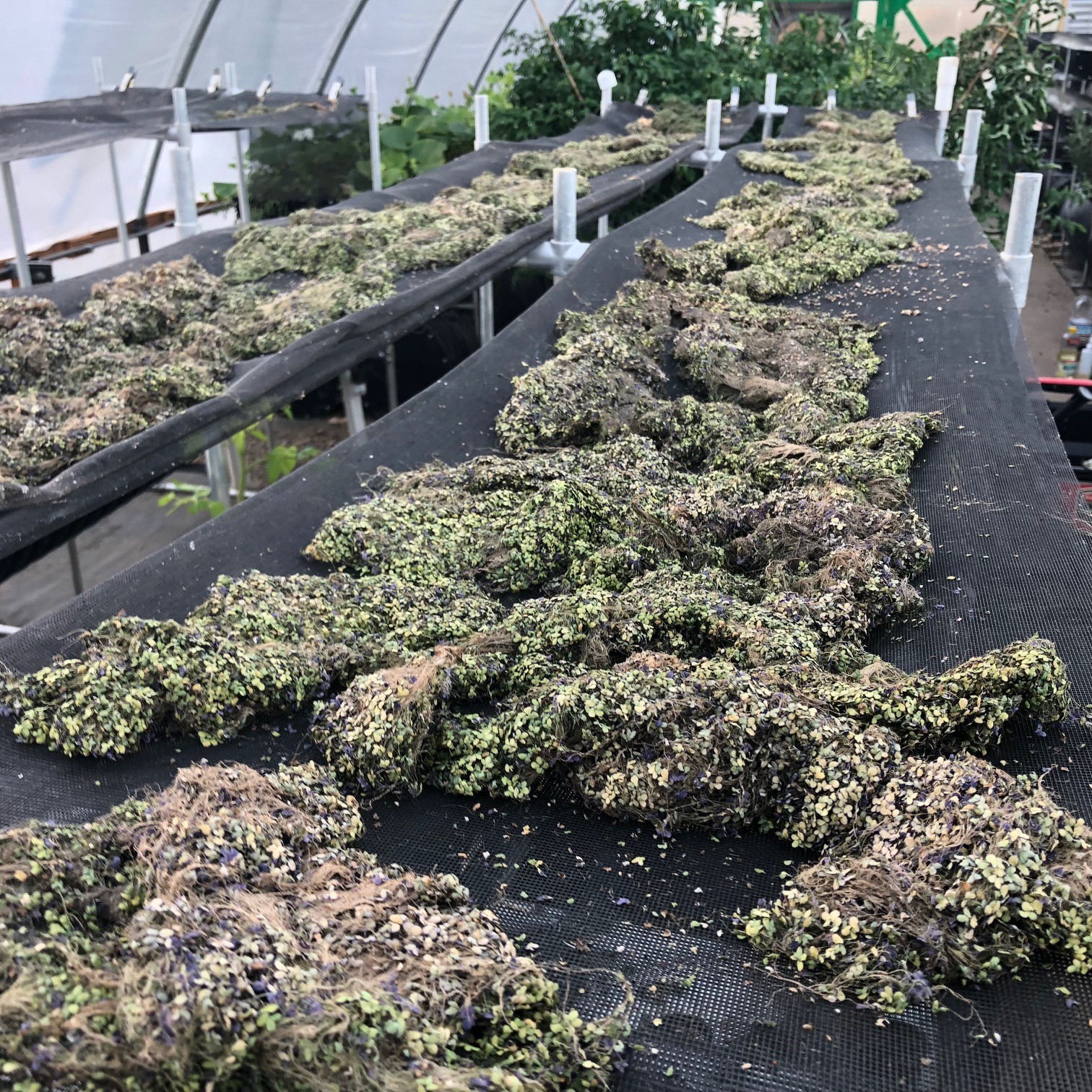


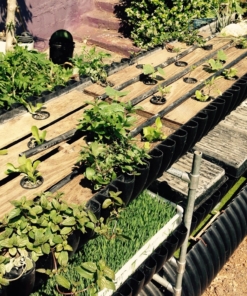
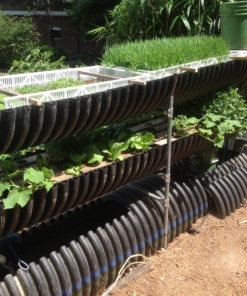
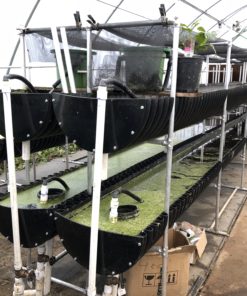
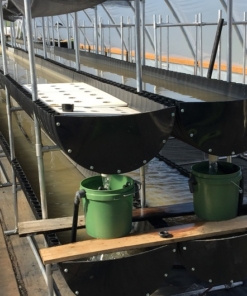

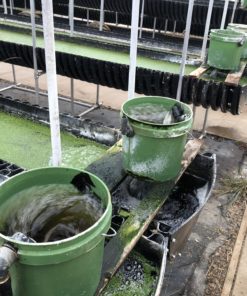
Pingback: Can Duckweed Purify Water? – gordyfish.com
Pingback: Growing duckweed for fish food - Taunt On Water
Pingback: Can You Smoke Duckweed? – Bescord
Pingback: Do Chickens Eat Duckweed? – Bescord
Pingback: When Does Duckweed Die – Bescord
Pingback: Trout Bass And Catfish: Fishing At Stewart Park Duck Pond In Roseburg Oregon – Loup City